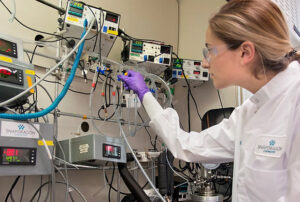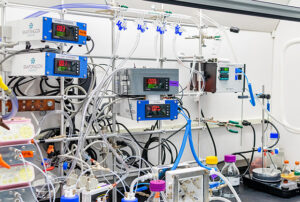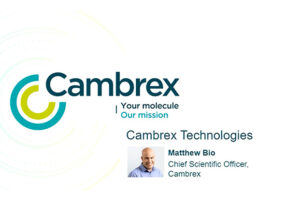Axial Chirality in the Sotorasib Drug Substance, Part 2
Leveraging a High-Temperature Thermal Racemization to Recycle the Classical Resolution Waste Stream
In part one of this two-part series, “Development of a Classical Resolution to Prepare an Atropisomerically Pure Sotorasib Intermediate,” Amgen scientists detail the design and execution of a classical resolution to generate atropisomer M-1 from a racemic precursor (rac-1). In parallel, the team sought to develop a racemization process to enable recycling of the classical resolution waste stream and maximize productivity and sustainability. Their computational and experimental methods revealed a high barrier to rotation (ca. 42 kcal/mol) prompting the design of a high-temperature (>300 °C) racemization protocol for recovery of the racemic compound.
In part two, we describe how our team at Snapdragon Chemistry supported Amgen with the development and kilogram-scale demonstration of a high-temperature continuous-flow racemization process to recycle the off-enantiomer of an atropisomeric sotorasib intermediate. We explain how we determined the barrier to rotation, optimized conditions to enable racemization, and show proof-of-concept for a continuous-flow process to execute the process, as well as a kilogram-scale demonstration. Our results include:
- Recovery of the undesired atropisomer as a crystalline solid from the classical resolution waste stream.
- Thermal racemization by a high-temperature continuous-flow process.
- Isolation of the racemic compound by crystallization directly from the reaction stream.
Read part two of the article titled, “Leveraging a High-Temperature Thermal Racemization to Recycle the Classical Resolution Waste Stream,” to learn more.




